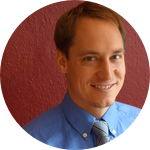About This Project
Most high school biology teachers miss the tools to effectively teach human evolution. We have developed an inquiry-based lab where students investigate human evolution measuring hominid skull replicas. We published research showing how this lab works and what learning outcomes it produces. Now we need to test how we can enable teachers to effectively deliver the course. A cohort of 20 teachers will tell us what worked.
Ask the Scientists
Join The DiscussionWhat is the context of this research?
"... from so simple a beginning endless forms most beautiful and most wonderful have been, and are being..." -- Charles Darwin
Almost a century later, the Scopes Monkey Trial still haunts America: to date, science advocates lament the sub-optimal instruction of evolution, with only 28% of biology teachers adequately teaching the subject.
With respect to human evolution, even the College Board's AP Biology course notably does not hone in on the subject in its Course & Exam Description. Its Investigative Labs manual also does not contain a lab on the subject.
A compelling case for human evolution is made with the fossil hominids that paleoanthropologists have unearthed through sweat, toil and sometimes sheer luck.
High school Biology, please meet Paleoanthropology.
What is the significance of this project?
In our inquiry-based lab, students, skull replicas in hand, take measurements on 3 variables of hominin evolution -- opisthion index, maxillary angle, and cranial capacity.
By engaging in the scientific process, the learner discovers how hominid evolution took place over the past 7 million years.
The lab allows a student to actively agree with the theory of evolution, not just accept it, as reported by teachers that witnessed our lab in action.
Our biggest bottleneck right now is getting teachers to effectively deliver the course material. Obtaining consistent results in multiple classrooms with our teaching materials may allow us to expand the program.
Imagine a world where all students graduate understanding how we evolved. Now that's a world we want to live in!
What are the goals of the project?
In our first paper we explored the subject of the lab's learning modes and outcomes. Our next step is to scientifically investigate the teacher component. What pedagogical factors underpin a teacher's effective delivery of this lab?
A cohort of 20 teachers will be oriented on the lab, be provided the necessary inputs, will then themselves deliver the lab. Thereafter we will interview them, and scientifically parse out what worked. This research project will thus advance the pedagogy needed to effectively deliver the story of our deep history in the classroom.
We plan to publish a paper and share the results with our backers.
In the process, 20 biology teachers will have been trained and supported to roll out this lab.
Yes, it takes science to advance science instruction!
Budget
The first cost is the purchase of hominid skull replicas as they are too pricey for your average high school's biology lab budget. Bone Clones offers quality resin skulls.
Our lab description explains which 11 skulls are needed, plus a 3D printed Homo naledi skull that Lee Berger has made available, and incorporate that skull in our lab's line-up.
The lab also requires 2 measurement tool sets (12 protractors and calipers per set), which will rotate between participating schools (skulls-on-tour).
Travel funds and stipends are needed to host an in-person, hands-on training to orient teachers, share methods and build a support network.
The 20 select teachers -- our subjects of this study -- are compensated for their time (initial training, conference calls, interviews). To recruit the teachers we will work with NCSEteach.
Any additional funds raised will go to scaling up this study's teacher participation. No funds will be used for data collection, analysis, or paper drafting.
Endorsed by
Meet the Team
Team Bio
Chris will serve as the primary researcher, while Robert will lead the teacher training.
Chris N. Bayer
Dr. Chris Bayer spent the last decade working for Tulane University as a social scientist in Africa.
In a small room in the Nairobi National Museum, he encountered hominid skull replicas unearthed from the East African soil, lined up on a table. Seeing them for the first time, he proceeded, like a doubting Thomas, to poke his fingers through the empty eye sockets of our ancient ancestors and relatives. "Why," he asked himself, "did I have to come all the way to Kenya to see this?"
In 2013 he and Michael Luberda designed the “Be a Paleoanthropologist for a Day” lab, piloting it in 7 high schools in New Orleans.
He is co-author of the paper "Measure, Then Show: Grasping Human Evolution Through an Inquiry-Based, Data-driven Hominin Skulls Lab."
Robert Dennison
Robert Dennison is an independent educational consultant.
An award-winning biology teacher who spent 32 years teaching full time in the Houston area followed by a stint as the Regional Director for The National Math and Science Initiative's Colorado schools. He continues to be active in training both teachers and students across the country. Robert is well known for his expertise in the teaching of evolution and has been widely recognized for his portrayals of Charles Darwin which have been seen across the country as well as in Canada and England.
Robert has to date trained more than a dozen biology teachers how to administer our lab.
Lab Notes
Nothing posted yet.
Additional Information
Here the link to our first paper, entitled: "Measure, Then Show: Grasping Human Evolution Through an Inquiry-Based, Data-driven Hominin Skulls Lab."
Our lab is free to download on our website: www.ancientancestors.org
Btw, Bill Nye unwittingly helped fund the $100 million construction of Noah's Ark by debating Ken Ham. We hereby offer him a chance to redeem himself by supporting this initiative! :-)
Project Backers
- 6Backers
- 1%Funded
- $206Total Donations
- $34.33Average Donation






